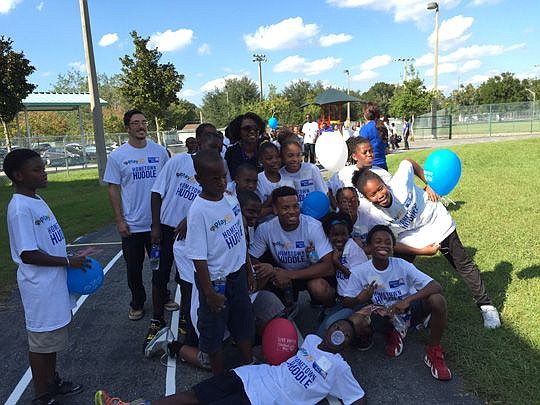
When Cecil Shorts III catches passes, good things tend to happen for the Jacksonville Jaguars. Likewise, when the wide receiver tweets about United Way of Northeast Florida, the nonprofit tends to score a touchdown.
Shorts is the Jaguars’ liaison to the United Way and, as it turns out, a key messenger for the organization.
“We see an increase in web traffic and engagement every time he mentions us on Twitter,” says Lisa Daniel, the United Way’s vice president of marketing and communications.
Few nonprofit agencies have the benefit of a professional athlete boosting their marketing efforts. But the benefits of social media can still come to those organizations that put the most thought into their posts, says Georgette Dumont, a University of North Florida assistant professor of public administration, who studied the impact social media can have on nonprofits.
“Social media has to be very strategic. There has to be a reason for these organizations to use it to meet their greater goal, which is their mission,” Dumont said.
Dumont’s report presents data on how the public interacts with nonprofits on social media platforms in Duval County and statewide.
That research produced data Dumont didn’t expect: 65 percent of Duval County residents who engage with nonprofits via social media have donated money due to a post.
“This is surprising (because) when I work with nonprofits, I tell them they are not going to make a lot of money off social media,” she said.
The UNF study also found that 68 percent of people in Duval County who use social media to engage with nonprofits have attended an event because of a post and 62 percent have volunteered due to a post.
The Jacksonville Humane Society directly benefits from social media posts promoting fundraising and awareness, says Diana Fox, the agency’s community relations coordinator.
Social media has helped raise thousands of dollars, find homes for thousands of animals and help Jacksonville become the largest no-kill city in the United States, she said.
The Nonprofit Center of Northeast Florida, a member-organization whose services include coaching nonprofits, is typical of many of the agencies it serves. It heavily relies on Facebook, Twitter and other social mediums to tell its story because it has no advertising budget, said Jayne Evans, the organization’s communications coordinator.
Dumont said that in seminars and as a Nonprofit Center community coach, she describes using social media as something akin to a blind date — an initial getting-to-know-each-other interaction. Ideally, but not always, the relationship grows from there, she said.
“It might get them to donate an hour or two, or get them to volunteer for an event, or donate $1 or $5. The hope is to grow the relationship over time to get them eventually invested into the organization,” she said.
Dumont said it’s important for organizations to learn as much as they can about what is working and why so they can best integrate social media and other online communications into their strategies.
The Humane Society is among the nonprofits that use Facebook, Twitter and Google analytics tools to help develop its messaging strategies.
“This allows us to determine trends, what is working and what is not,” Fox said.
First Coast No More Homeless Pets actively uses Facebook, Twitter, Instagram and its website to promote adoption events and share success stories.
“Without (social media), I believe our donations, volunteer base and all things First Coast No More Homeless Pets would suffer greatly,” said Nicole Brose, the organization’s development director. “It is crucial to our brand.”
The UNF study did not review whether there’s a direct return on investment when resources are allocated to social media posts.
Still, “over the last couple of years, there’s a correlation between more organizations finding more benefits of their use of social media, and more organizations are investing more employee times into use of social media,” Dumont said.
The UNF data says 41 percent of Duval County residents who use social media to engage with nonprofits are ages 25 to 64. Those numbers are consistent with what Community Foundation for Northeast Florida leaders have learned, much to their surprise, said Nina Waters, the organization’s president.
“What we’ve found by looking at comments and likes on Facebook is that it is engaging donors and fund holders of all ages,” Waters said. “In addition, we are hearing from individuals who had no previous engagement with our foundation.”